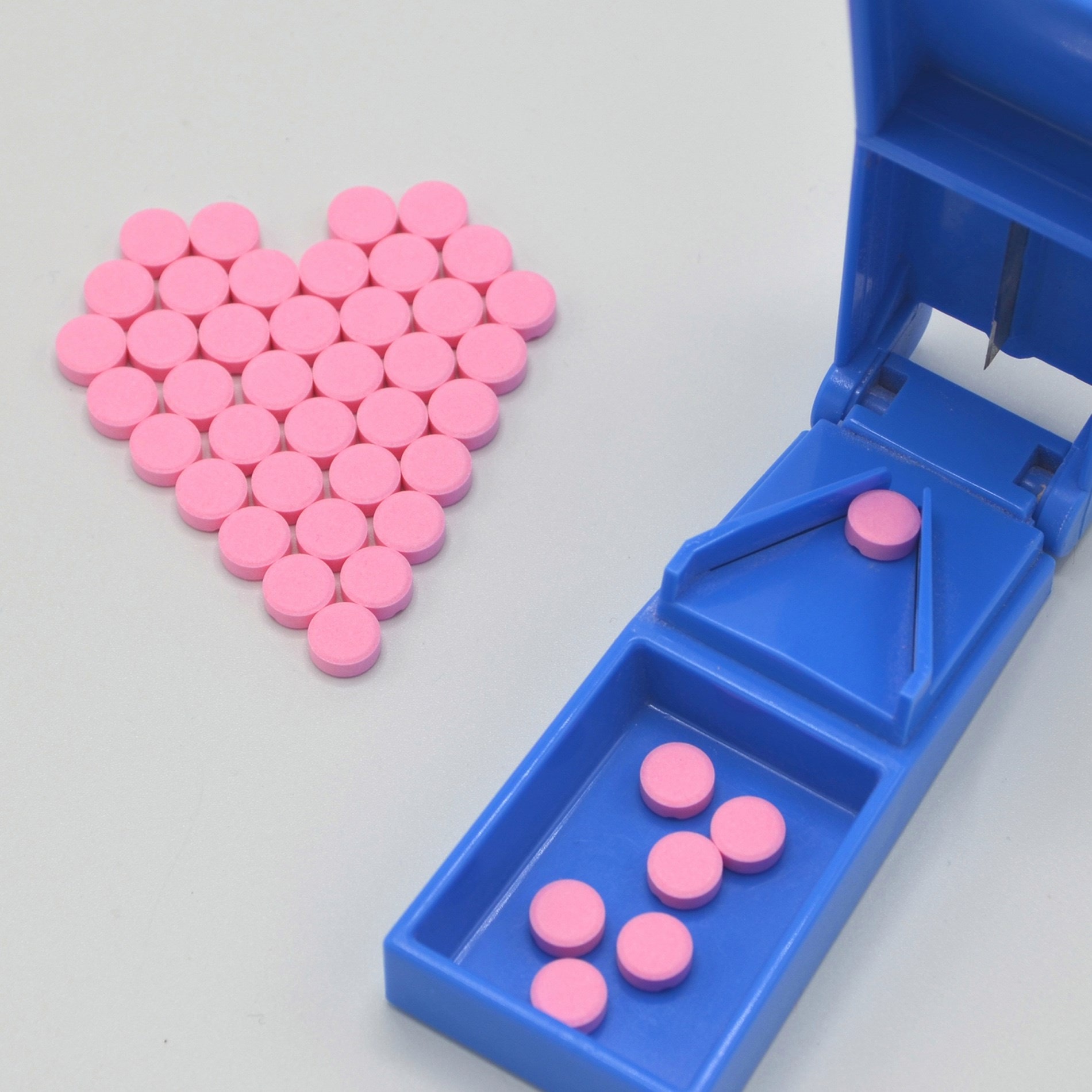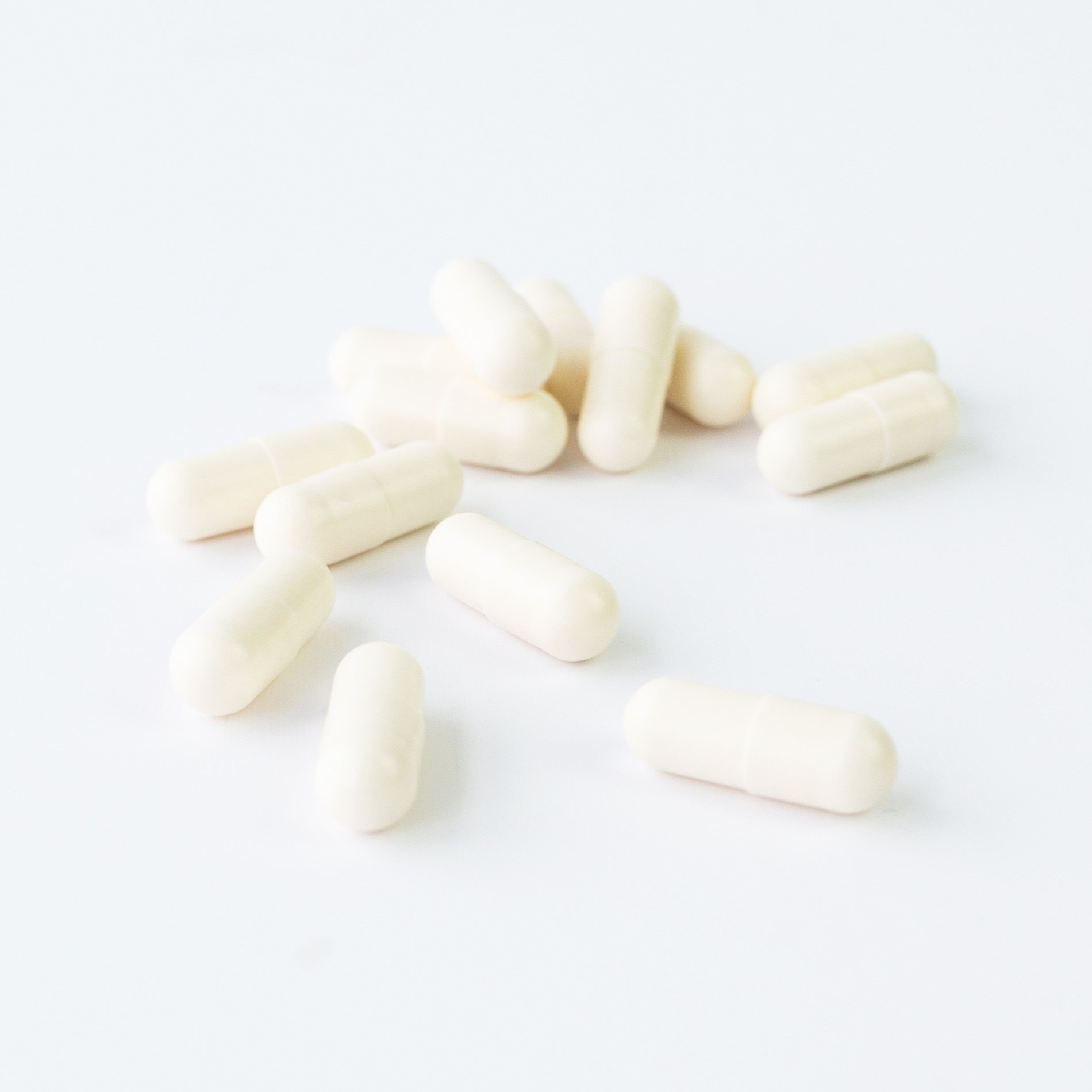Do probiotics help with eczema?
In today’s world, eczema is a very common and unpleasant complaint. The gut microbiome has become increasingly recognised for its role in inflammatory and immune-mediated conditions, including eczema. Dysbiosis has been identified in many of those who suffer with eczema1. Probiotics for eczema and the gut microbiome with probiotics is a growing area of interest to help manage symptoms. Read more about this on the Probiotics Learning Lab: What are Probiotics?
This article looks at the different types of eczema, and the way in which probiotics might help as part of a management protocol:
- Types of eczema
- What is atopic dermatitis?
- Causes and management of Atopic Dermatitis
- The role of the gut microbiome in eczema
- How can probiotics for eczema help?
- Best probiotics for eczema
- Key takeaways

Types of eczema
The term eczema refers to a group of inflammatory skin conditions. There are many different types of eczema, categorised based on the underlying cause and skin location affected2. The lifetime prevalence of eczema is reported to be 28% of the population, but it is most common in children. Up to 20% of children are affected3, with 60% of cases developing before the age of one year. For most individuals, it resolves in adolescence. There is often a predisposition for the development of other atopic diseases such as asthma and allergic rhinitis, known as the “atopic march”3. Read more about recent clinical research behind probiotics for asthma.
In adults, an average of only 38% reported having eczema in childhood which makes adult onset eczema much more prevalent than once thought4. Those with adult onset eczema are less likely to have a family history of asthma or allergies; risk factors include a history of smoking and female gender.
The most common subtypes include the following:
- Atopic Dermatitis (inflammation of the skin related to abnormal immune response, impaired skin barrier and a genetic predisposition)
- Contact Dermatitis (inflammatory reaction following exposure of skin to allergen such as bleach and other irritants)
- Seborrheic Dermatitis (eczema occurring in areas with plentiful sebaceous glands such as the scalp. Cause is unknown but overgrowth of yeasts colonising the skin, hormonal and genetic factors contribute)
- Nummular or Discoid Dermatitis (inflammatory eczema triggered by environmental triggers, characteristic discoid shape)
- Stasis Dermatitis (inflammatory eczema related to poor circulation and venous disease)
- Dyshidrotic Dermatitis (eczema consisting of small itchy blisters typically on soles of feet and palm of hand, associated with seasonal allergies)
What is atopic dermatitis?
The most common type of eczema is atopic dermatitis2.The majority of clinical research assessing the effects of probiotics on eczema is focused on atopic dermatitis. Atopic dermatitis is a chronic inflammatory skin disease where localised patches of skin are typically dry, scaly, red and itchy. It most often manifests for the first time in infancy but can develop for the first time in adulthood. In severe cases, the skin may become thickened and ooze. It may become infected and require antibiotics.
In infants it is typically localised to the face, nappy area, or extensor surfaces of joints such as knees and elbows. Later in life, it more commonly affects flexural surfaces – the back of the knees or inside the elbows. Itch is an intense symptom which leads to scratching and skin damage. Atopic dermatitis can have a significant negative impact on the quality of life of those who suffer – limiting activity and contributing to sleep loss5. It can be exacerbated by many lifestyle factors including emotional distress, wool clothing, heat, dry or cold weather, sweating, bathing, and exercise6 but researchers are now also considering the impact of gut health.
Causes and management of atopic dermatitis
Genetic and immunological factors contribute to the development of atopic dermatitis:
Genetic - A loss-of-function mutation of the gene encoding filaggrin, an important protein required for adequate skin barrier integrity, is implicated.
Immunological - An abnormal immune response is a fundamental driver in atopic dermatitis. There is an imbalance in T helper 1 and T helper 2 immune responses in those suffering with atopic dermatitis6, with increased T helper 2 responses7.
There is currently no cure for atopic dermatitis. However, in conventional medical management there are various options to keep symptoms under control. These include avoidance of known environmental triggers, topical emollients, topical or oral steroids to reduce inflammation, and topical and oral immunomodulators8.
The role of the gut microbiome in eczema
In early life, colonisation of the gut with microbes is fundamental for the development of a healthy immune system. These microbes activate and promote healthy development of the immature gut mucosal immune system. The hygiene hypothesis identifies an association between the increasing prevalence of atopic and allergic conditions and features of a typical Western lifestyle including highly sanitised environments and antibiotic exposure9. Infants are exposed to microbes in their environment less and less which can prevent adequate development of the immune system. An immature immune system is dominated by a T helper 2 cell immune response which is implicated in allergic and atopic diseases including atopic dermatitis. For more information about the gut microbiome in early life, read this article on how the infant gut develops.
How can probiotics for eczema help?
There are several ways in which probiotics for eczema may prove to be a useful addition to a health protocol for eczema:
Antibiotics are known to deplete our natural friendly bacteria populations. Interestingly, the use of antibiotics in the first 2 years of life has been associated with an increased risk of developing eczema10,11. Replenishing the gut microbiome with specific probiotic bacteria while taking an antibiotic is a worthwhile endeavour. To learn more, read this article about taking probiotics with antibiotics.
Imbalance in the gut microbiome, with higher levels of harmful bacteria such as Clostridia and Staphylococcus aureus and reduced levels of beneficial Bifidobacteria, have been reported in those with eczema12. Altering the gut microbiome composition with probiotic supplementation may be helpful.
An imbalance in Th1/Th2 immune responses is prominent in atopic dermatitis. Probiotics can help through their anti-inflammatory effects and by suppressing the Th2 immune cell response. preventing and reducing the severity of atopic dermatitis. Specific strains of probiotics can reduce inflammation by stimulating regulatory T cells which produce anti-inflammatory cytokines, interleukin-10 and Transforming Growth Factor-Beta13. Stimulation of regulatory T cells can also inhibit T helper 2 cells13.
Increased intestinal permeability or “leaky gut” has been linked with atopic dermatitis for many years14. In leaky gut, the gaps between epithelial cells of the gut wall lining, known as tight junctions, are enlarged. These gaps allow antigens, substances that prompt an immune response, to pass through the intestinal lining. Exposure of the antigen to the GALT (Gut Associated Lymphatic Tissue) in the mucosa15 stimulates an inflammatory response. This may contribute to the development of inflammatory conditions such as atopic dermatitis. The gut microbiome plays an important role in maintaining the integrity of tight junctions in the gut lining. Probiotics can positively contribute to this “barrier effect”. To learn more about this, read the following article: Could probiotics help with leaky gut?
Best probiotics for eczema
When trying to support eczema symptoms, it is best to use strains which have been specifically researched for this condition and found to elicit positive effects:
- Lactobacillus rhamnosus HN001®
- Lactobacillus rhamnosus GG®
- Bifidobacterium lactis BB12®
- Bifidobacterium breve M-16V®
- Bifidobacterium lactis Bi-07
- Lactobacillus salivarius LS01
Lactobacillus rhamnosus HN001®
Specific probiotic strains have been shown to help prevent the development of eczema when used in early life7,16. Several clinical trials have been conducted assessing the effects of Lactobacillus rhamnosus HN001® on the development and severity of eczema17. In a gold standard trial of 298 women and their infants, administration of 6 billion CFU of L. rhamnosus HN001® to infants from birth to 6 months yielded a significant improvement in the lifetime prevalence of eczema evaluated until age 11 years (p=0.002) compared with placebo17.
Lactobacillus rhamnosus GG® and Bifidobacterium lactis BB12®
In another gold standard trial by Schmidt et al, involving 285 infants with an average age of 10 months old, the preventative effects of a combination of 1 billion CFU of both Lactobacillus rhamnosus GG® and Bifidobacterium lactis BB12® daily were demonstrated. After 6 months, significantly more infants had developed eczema in the placebo group compared with the control group (p=0.036).
When it comes to probiotics for the management of established atopic dermatitis, various clinical trials have assessed different probiotic strains for their ability to help improve the symptoms and quality of life of those suffering with eczema. A recent systematic review evaluating the impact of probiotic supplementation upon symptoms of established eczema around the world showed an overall clinically significant reduction in eczema severity in the probiotic groups versus controls18. This research is promising, although of uncertain clinical significance due to the heterogeneity of clinical trials6,19.
Bifidobacterium breve M-16V®
In a gold standard trial, 31 infants under the age of 11 months with severe atopic dermatitis were randomised to receive 100 million CFU of M-16V® with prebiotics daily or placebo for 4 months20. At the end of the study, there was a significant decrease in eczema severity in both groups, but the improvement was more significant in the probiotic group (p<0.01). There was also a significant reduction in the Th2 to Th1 chemokine ratio (p<0.01) in the probiotic group compared with placebo, indicating a reduction in Th2 immune response.
Bifidobacterium breve M-16V® can be found in Optibac Probiotics Baby Drops.
Bifidobacterium lactis Bi-07
In a gold standard trial in Denmark, 50 children with an average age of 18 months with atopic dermatitis were randomised into 3 groups. One group were given 10 billion CFU of B. lactis Bi-07, another group were given 10 billion CFU of L. acidophilus NCFM® and the third group were given a placebo for 8 weeks21. Although initially no significant improvement in eczema symptoms were noted, post hoc analysis delineated a significant improvement in SCORAD (a clinical tool used to assess eczema severity) in the B. lactis Bi-07 group (p=0.009) with no differences seen in the other groups.
Lactobacillus salivarius LS01
In a double blind randomised controlled trial of 38 adults with moderate to severe atopic dermatitis, 19 participants were allocated to receive 2 billion CFU of L. salivarius LS01 per day for 4 months and the others were given a placebo22. A significant improvement in the probiotic group was noted after 8 weeks in comparison with placebo (p<0.001). The presence of Staphylococcus was significantly reduced in the probiotic group compared with placebo (p<0.05). Although the probiotic group achieved better results than the placebo group, the results of the placebo group were also significantly improved from baseline. Further clinical testing is required to assess the effects of this strain.
Based on this research, health professionals may like to consider gut health and probiotic supplementation as part of any supporting protocol for eczema.
People often ask how long probiotics for eczema take to work. There is no simple answer, unfortunately, as each case is individual. However, most studies on probiotic strains for atopic dermatitis are for at least an 8 week period so we suggest persevering with any supplement for a few months to see the best impact.
Key takeaways
- Atopic dermatitis is the most common type of eczema. It is a chronic inflammatory skin condition which can affect all age groups.
- Although the cause is not fully known, it is believed that genetic predisposition is a factor, involving an abnormal immune response.
- Conventional eczema treatments involve topical emollients to protect the skin barrier, and the use of steroids, topical and oral, to reduce inflammation.
- Although further clinical evidence is required, research into the gut-skin axis1 suggests that probiotics may be useful part of an eczema management protocol.
- Species of bacteria that may be useful include various strains of Lactobacilli such as Lactobacillus rhamnosus HN001®, Bifidobacterium breve M-16V®, Bifidobacterium lactis Bi-07 and Lactobacillus salivarius LS01.
To find out more about the role of the gut microbiome in our immune health, read the article Probiotics for Immunity on the Probiotic Professionals site.
You may also be interested in reading about Which Probiotics are best for Candida
Healthcare professionals can visit the Probiotics Database to read more about the research behind Lactobacillus rhamnosus HN001®, Lactobacillus rhamnosus GG® , Bifidobacterium lactis BB-12®, Bifidobacterium breve M-16V® and Bifidobacterium lactis Bi-07.
References
- Lee S-Y, Lee E, Park YM, Hong SJ. Gut-Skin Axis in Atopic Dermatitis Does the Gut Microbiome have an impact on AD? Allergy Asthma Immunol Res. 2018;10(4):354-362. doi:10.4168/aair.2018.10.4.354
- Rook A. Rook’s Textbook of Dermatology. Ninth Edit. (Griffiths C, Barker J, eds.).; 2016.
- Kowalska-Olędzka E, Czarnecka M, Baran A. Epidemiology of atopic dermatitis in Europe. J Drug Assess. 2019;8(1):126-128. doi:10.1080/21556660.2019.1619570
- Abuabara K, Ye M, McCulloch CE, et al. Clinical onset of atopic eczema: Results from 2 nationally representative British birth cohorts followed through midlife. J Allergy Clin Immunol. 2019;144(3):710-719. doi:10.1016/j.jaci.2019.05.040
- Lewis-Jones S. Quality of life and childhood atopic dermatitis: The misery of living with childhood eczema. Int J Clin Pract. 2006;60(8):984-992. doi:10.1111/j.1742-1241.2006.01047.x
- Dang D, Zhou W, Lun ZJ, Mu X, Wang DX, Wu H. Meta-analysis of probiotics and/or prebiotics for the prevention of eczema. J Int Med Res. 2013;41(5):1426-1436. doi:10.1177/0300060513493692
- Malik K, Heitmiller KD, Czarnowicki T. An Update on the Pathophysiology of Atopic Dermatitis. Dermatol Clin. 2017;35(3):317-326. doi:10.1016/j.det.2017.02.006
- Makrgeorgou A, Leonardi-Bee J, Bath-Hextall FJ, et al. Probiotics for treating eczema. Cochrane Database Syst Rev. 2018;2018(11). doi:10.1002/14651858.CD006135.pub3
- Strachan DP. Family site, infection and atopy: The first decade of the “hygiene hypothesis.” Thorax. 2000;55(SUPPL. 1):2-10. doi:10.1136/thorax.55.suppl_1.s2
- Hoskin-Parr L, Teyhan A, Blocker A, Henderson AJW. Antibiotic exposure in the first two years of life and development of asthma and other allergic diseases by 7.5 yr: A dose-dependent relationship. Pediatr Allergy Immunol. 2013;24(8):762-771. doi:10.1111/pai.12153
- Wickens K, Ingham T, Epton M, et al. The association of early life exposure to antibiotics and the development of asthma, eczema and atopy in a birth cohort: Confounding or causality? Clin Exp Allergy. 2008;38(8):1318-1324. doi:10.1111/j.1365-2222.2008.03024.x
- Björkstén B, Sepp E, Julge K, Voor T, Mikelsaar M. Allergy development and the intestinal microflora during the first year of life. J Allergy Clin Immunol. 2001;108(4):516-520. doi:10.1067/mai.2001.118130
- Vitaliti G, Pavone P, Guglielmo F, Spataro G, Falsaperla R. The immunomodulatory effect of probiotics beyond atopy: An update. J Asthma. 2014;51(3):320-332. doi:10.3109/02770903.2013.862259
- Pike M. Increased Intestinal Permeabiity in Atopic Eczema. 1986. doi:10.1111/1523-1747.ep12284035
- Lopetuso LR. The therapeutic management of gut barrier leaking: the emerging role for mucosal barrier protectors. 2015;(19):1068-1076.
- Mansfield JA, Bergin SW, Cooper JR, Olsen CH. Comparative Probiotic Strain Efficacy in the Prevention of Eczema in Infants and Children: A Systematic Review and Meta-Analysis. Mil Med. 2014;179(6):580-592. doi:10.7205/milmed-d-13-00546
- Wickens K, Barthow C, Mitchell EA, et al. Effects of Lactobacillus rhamnosus HN001 in early life on the cumulative prevalence of allergic disease to 11 years. Pediatr Allergy Immunol. 2018;29(8):808-814. doi:10.1111/pai.12982
- Huang R, Ning H, Shen M, Li J, Zhang J, Chen X. Probiotics for the treatment of atopic dermatitis in children: A systematic review and meta-analysis of randomized controlled trials. Front Cell Infect Microbiol. 2017;7(SEP):1-11. doi:10.3389/fcimb.2017.00392
- Teng P, Bateman NW, Darcy KM, et al. Guidelines of Care for the Management of Atopic Dermatitis Part 4: Prevention of Disease Flares and Use of Adjunctive Therapies and Approaches. Gynecol Oncol. 2015;136(3):554-561. doi:10.1016/j.ygyno.2014.12.035.Pharmacologic
- Hulshof L, Overbeek SA, Wyllie AL, et al. Exploring immune development in infants with moderate to severe atopic dermatitis. Front Immunol. 2018;9(MAR). doi:10.3389/fimmu.2018.00630
- Gøbel R, Larsen N, Mølgaard C, Jakobsen M, Michaelsen KF. Probiotics to young children with atopic dermatitis: A randomized placebo-controlled trial. Int J Probiotics Prebiotics. 2010;5(2):53-59.
- Drago L, Iemoli E, Rodighiero V, Nicola L, De Vecchi E, Piconi S. Effects of Lactobacillus salivarius LS01 (DSM 22775) treatment on adult atopic dermatitis: A randomized placebo-controlled study. Int J Immunopathol Pharmacol. 2011;24(4):1037-1048. doi:10.1177/039463201102400421
- Carucci L et al., (2022) Therapeutic effects elicited by the probiotic Lacticaseibacillus rhamnosus GG in children with atopic dermatitis. The results of the ProPAD trial, Pediatric Allergy and Immunology. 33 (8) e13836
- Umborowati MA et al., (2022) The role of probiotics in the treatment of adult atopic dermatitis: a meta-analysis of randomized controlled trials, Journal of Health, Population and Nutrition. 41 (37)
Popular Articles
View all General Health articles-
General Health17 Mar 2023


